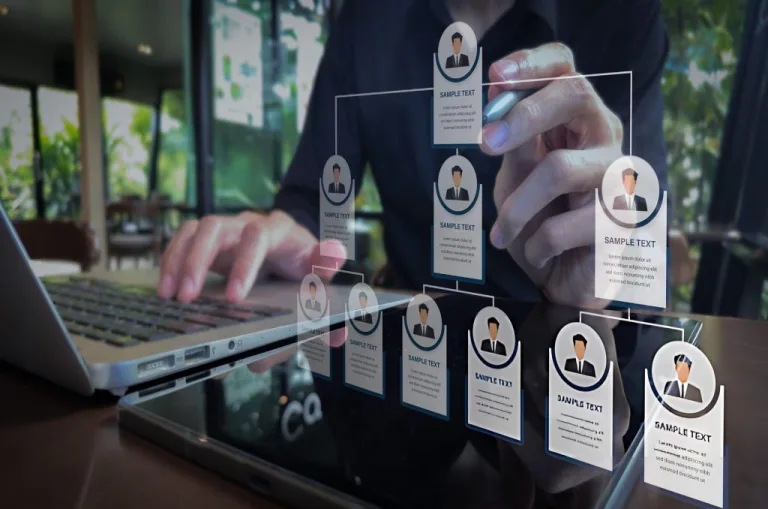Top 5 Year 2025 Supply Chain Disruptions and the Solution Presented through Digital Procurement
Introduction
As supply chains head into 2025, they’re beset on all sides by perpetual disruption. Political turmoil is reconfiguring trade lanes, natural catastrophes are slowing down supply bases, and the pressure to be sustainable just increases. The result?Procurement teams are wiser and more under the microscope than ever.
There is a trend, however. It is the ones that remain under manual or traditional procurement procedures that fall behind. While those employing digital procurement software weather shocks, rather than merely surviving them, they are capitalizing on, as shocks, opportunities for competitive benefit. Digital business is a front-of-mind necessity in the present, Gartner states, for 87% of supply chain leaders, but many of them still don’t have a point of entry.
This report examines the biggest 2025 supply chain challenges and finds out why procurement software like Source-to-Pay Software , today delivers actionable, concrete solutions.
Challenge 1: Paralyzing Decision-Making Due to Geopolitics
Most procurement teams know their Tier 1 suppliers but little else. When Tier 2 or Tier 3 shocks happen, they cascade up the supply chain, unbeknownst. Only 13% of companies are actually multi-tier transparent, Deloitte reports, although more transparent companies can rebuild shocks up to 50% faster, reports McKinsey.
How Procurement Software Helps
Upstream platforms monitor entire supplier networks, tier by tier. A multinational drug manufacturer used buying software to identify an upcoming shortage of an API (Active Pharmaceutical Ingredient) six months before the rest of the industry. As they desperately shopped the market, they already had standby, reliable sources allocated. By integrating financial, logistics, and regulatory information, the same tools create a living “map” of vulnerabilities and opportunities.
Challenge 2: Geopolitics Threat Escalates Faster than Teams Can Respond
In 2025, trade embargoes, tariffs, and neighborhood wars continue to shut shipping lanes and supply chain continuity. Out-of-date traditional risk measurement with Quarterly Reporting and Human Analysis can’t keep up.
How Procurement Software Helps
Procurement portals also blend the real-time feeds—local news, social media, and even the government policy databases—into action-oriented risk dashboards. A top automobile company employed comparable software to spread sources a couple of months prior to political uprisings put a semiconductor hub into freeze. Procurement software, applying “what-if” scenarios, allows forward planning and not firefighting in reaction.
Challenge 3: Increasing Pressure on Sustainability
Sustainability went from being desirable to being necessary. Regulators, investors, and buyers expect complete carbon emissions, labor conditions, and ESG policy transparency in supply chain management. But the problem is one of scale: no human system can keep track of hundreds of suppliers in multiple tiers.
How Procurement Software Helps
ESG also gets tracked automatically on digital procurement platforms. It follows spend to emission factors, computes supplier-level footprints, and identifies non-compliance. Take the global retailer that followed labor risks down three tiers—to risks that never materialize in routine audits. Monitoring with AI-based technology makes compliance, yes, but also optimization: interrogating suppliers on sustainability as rigorously as on cost, quality, delivery.
Challenge 4: Financial Instability of Suppliers
Business cycles are striking suppliers. Increased interest rates, inflation, and erratic buying by consumers precipitate downturns that migrate along supply chains. Timing is everything: too late, after the risk appears on corporate balance sheets.
How Procurement Software Helps
Current systems track well-being of suppliers in real-time, tracking credit, payment delay, court records, and mood throughout the web. A manufacturer prevented disaster disruption since the system tracked early warning indicators of financial stress at a significant supplier, thus allowing it to implement backups long before the firm filed for bankruptcy. Procurement software beyond Tier 1 also can measure the fiscal viability of the suppliers’ suppliers, thus formalizing the whole chain.
Challenge 5: Manually Non-Scaleable Procurement Processes
With supply chains increasingly getting more sophisticated, procurement departments can no longer shy away from spreadsheets and email-based systems. Admin-wise, the Institute for Supply Management reports that the teams still have 60% percent of their time engaged in actual work, leaving them very little time other than that.
How Procurement Software Helps
Automation handles routine processes—the supplier onboarding, contract renewal, regulatory checkoffs—while AI uncovers things that would otherwise escape human attention. An example of a Fortune 500 company reduced procurement cycle time by 70% when it mechanized routine work so the team could focus on supplier innovation and diversity. The change transforms procurement, previously a cost-centre function, into a strategic value-driver.
Strategic Impact
Companies that confront those challenges head-on with procurement software achieve tangible benefits. They save 15-20% on spending, recover more than 25% quicker after interruptions, and optimize value within supply relationships, according to research.
Something else, they liberate themselves from back-office firefighting to forward strategy—and release resources for innovation, digitalization, and sustainability.
Adding Procurement Software to Lock in Successes
In order to be most effective, companies must:
- Begin with simplicity: Model multi-tiered supply chains before optimizing.
- Integrate systems: Make sure to integrate with ERP, finance, and logistics systems.
- Adopt-centered: Spend on change management as well as training.
- Strategically measure: Monitor savings, cycle-time, ESG, and gains in resilience.
- Scale planning: Select cloud-native apps that will scale automatically as the business expands.
What’s Next in Supply Chain Management?
It’s the future. Intelligent automation is the way the world is going. AI predicts disruption ahead of disruption occurring, digital twins mirror entire networks in real-time. Blockchain gives immutable, auditable visibility across tiers. Resilient organizations will be the ones who make it part of their core competency—not a line item on the procurement budget.
Conclusion
Supply chain constraints in 2025 are no longer the rule, they’re the new norm. Old procurement processes will leave companies stumbling, and digital procurement software will have them emerging victorious, wiser, tougher, and better positioned to grow.
It’s not a question of whether supply chains will be turbulent, it’s whether your procurement team will be ready.
To learn more about how e-procurement will be changing your supply chain management strategy, visit GEP insights.
Frequently Asked Questions
How is procurement software is different from an ERP system?
ERP (Enterprise Resource Planning) systems provide total business management capability with core procurement as part of it. Procurement applications provide more specialist, higher-end functionality like tracking supplier risk, strategic procurement, spend analysis, complemented by integrations with ERP systems.
What is the procurement software ROI window?
Early payback—greater transparency, reduced cycle times—typically emerges in the 90-day period. Best-in-class ROI typically emerges within 6-12 months as redirected disruptions and productivity gains provide financial payback.
Is procurement software even feasible for small and medium-sized companies?
Indeed. SMBs get hit harder by the disruption because they lack cushions. Cloud solutions now allow small businesses to access and pay for enterprise-class tools.
How do procurement software AI enhance Supplier Relationship Management (SRM)?
Suppliers are tracked in real-time by AI, which presents early warning flags on potential futures, predicting failure ahead of time. This shifts supplier management beyond remedial repair to preventive relationship-building.





